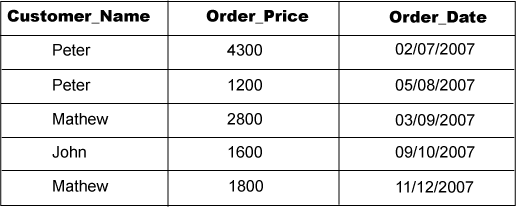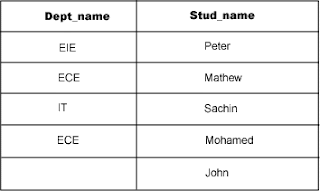•8:02 AM
SQL - View
A SQL View is a virtual table, which is based on SQL SELECT query. A view consists of rows and columns just like a table,except that the real tables store data, while the views won’t store data. The difference between a view and a table is that views are definitions built on top of a single table or multiple tables (or on top of another view), and do not hold data themselves. If data is changing in the underlying table, the same change is reflected in the view. The view’s data is generated dynamically when the view is referenced. A view references one or more existing database tables or other views. In effect every view is a filter of the table data referenced in it and this filter can restrict both the columns and the rows of the referenced tables.
• Specific rows of the tables.
• Specific columns of the tables.
• Specific rows and columns of the tables.
• Rows fetched by using joins.
• Statistical summary of data in a given tables.
• Subsets of another view or a subset of views and tables.
Some common examples of views are:
• A subset of rows or columns of a base table.
• A union of two or more tables.
• A join of two or more tables.
• A statistical summary of base tables.
• A subset of another view, or some combination of views and base table.
CREATING VIEWS
A view can be created by using the CREATE VIEW statement
SYNTAX
CREATE VIEW view_name [column_name (s)] AS
SELECT column_name(s)
FROM table_name
WHERE condition [WITH CHECK OPTION]
column_name specifies the name of the column to be used in view. If the column_name option is not specified, then the view is created with the same columns as specified in the select_statement.
WITH CHECK OPTION forces the data modification statements to fulfill the criteria given in the SELECT statement defining the view. It also ensures that the data is visible after the modifications are made permanent.
A view can be referenced and used from another view, from a SQL query, and from stored procedure. You can reference a view as you would reference any real SQL database table:
SELECT * FROM view_name
Example
Customer_Info
Product_Info
CREATE VIEW V_PRODUCT_SALES AS
SELECT A1.Customer_Name Customer_Info, SUM (A2.Sales) Product_Info
FROM Customer_Info A1, Product_Info A2
WHERE A1.Product_Name = A2.Product_Name
GROUP BY A1.Customer_Name
To find the contents of the VIEW
SELECT * FROM V_PRODUCT_SALES
UPDATING A VIEW
SYNTAX
CREATE OR REPLACE VIEW view_name AS
SELECT column_name(s)
FROM table_name
WHERE condition
DROPPING A VIEW
SYNTAX
DROP VIEW view_name
Advantages:
1. A view hides the complexity of the database tables from end users.
2. Views take very little space to store as it is not storing the actual data.
3. A view serves as a security mechanism. This ensures that users are able to retrieve and modify only the data seen by them. Users cannot see or access the remaining data in the underlying table.
4. A view can also serves as a mechanism to simplify query execution. Complex queries can be stored in the form as a view, and data from the view can be retrieved using simple queries.
Restrictions imposed on views:
• A view can be created only in the current database.
• The name of a view must follow the rules for identifiers and must not be the same as that of the base table.
• A view can be created only if there is a SELECT permission on its base table.
• A SELECT INTO statement cannot be used in view declaration statement.
• A trigger or an index cannot be defined on a view.
• The CREATE VIEW statement cannot be combined with other SQL statements in a single batch.














































